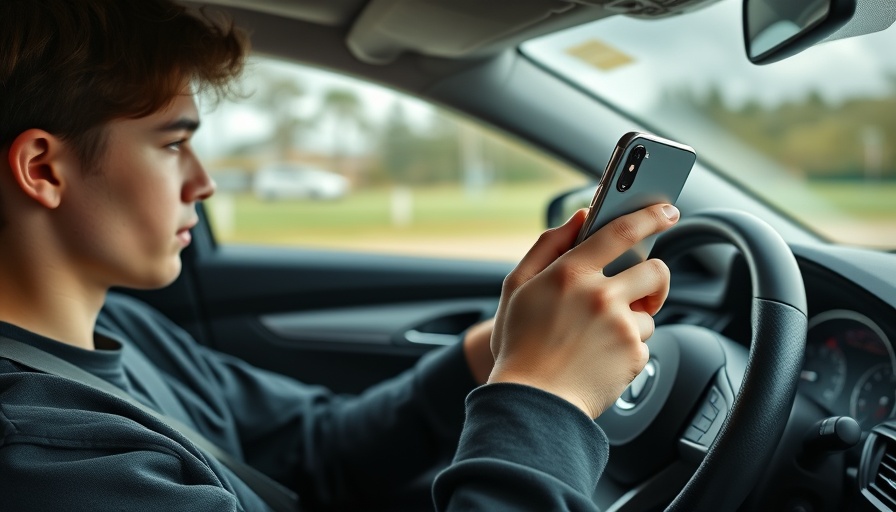
Understanding Teen Distracted Driving: The Hidden Dangers
Every year, dozens of innocent lives are lost due to the reckless behaviors of teen drivers, many of whom admit to using their cellphones while behind the wheel. A new study by public health researchers, including Rebecca Robbins from Harvard Medical School, sheds light on the alarming prevalence of distracted driving among teens. The finding? Approximately 70% of high school students report using or glancing at their phones for significant portions of their driving time.
The Statistics Behind the Behavior
According to the study, teens spend up to 20% of their trips engaged with their phones, significantly increasing crash risks. The risk of an accident skyrockets by 5.5 times when a driver reads or sends a text message. Despite understanding these dangers, many teens see phone use as a norm. This participant perception is a critical area to address in prevention strategies.
Social Influences: Why Teens Feel It's Acceptable
Teens' perceptions of distracted driving are heavily influenced by their peers. Robbins points out that young people often believe they need to stay connected for entertainment or navigation purposes, which reinforces their maladaptive behaviors. This belief that phone interaction enhances their driving experience is a major barrier to adopting safer habits.
Promoting Positive Change: Behavioral Interventions
The good news, however, is that there are bright spots in the study's findings. Over 30% of respondents reported practicing focused driving, often inspired by role models who prioritize safety. By leveraging these positive behaviors, public health campaigns can cultivate a cultural shift among young drivers that promotes safe driving practices. Robbins suggests initiatives that could educate teens about the benefits of using 'Do Not Disturb' modes on their phones or securing their devices in the backseat while driving.
Empowering Teens: The Role of Self-Efficacy
A significant factor in the likelihood of distracted driving is the teens' belief in their ability to resist temptation. The study revealed that teens with stronger self-efficacy—those who believed they could avoid distractions—were less likely to engage in unsafe driving behaviors. Interventions that focus on empowering them to say no can create a proactive approach to this issue.
Investing in a Safer Future: A Community Responsibility
Addressing the epidemic of distracted driving among teens isn't solely a responsibility of young drivers. Parents, teachers, and community leaders must all play an active role in promoting safe driving habits. It requires a united front to instill the importance of focused driving in the hearts and minds of young people. By integrating these discussions into schools and community programs, we can create an environment that reinforces positive behaviors.
As we recognize the alarming statistics surrounding teen distracted driving, let’s also focus on actionable solutions. Empowering young drivers, utilizing community support, and promoting responsible smartphone use will not only save lives but will also lay the groundwork for safer future generations.
 Add Row
Add Row  Add
Add 




Write A Comment